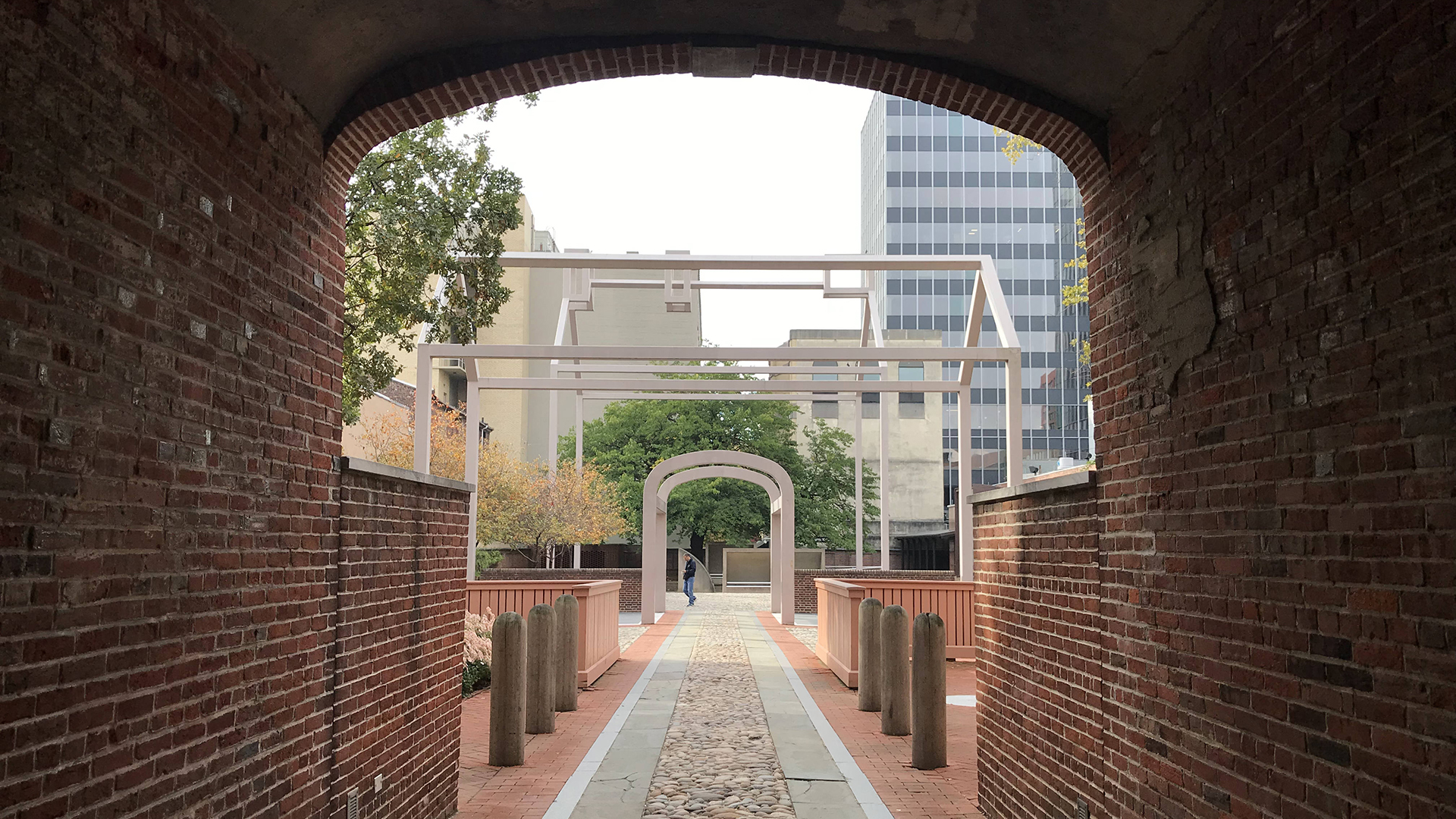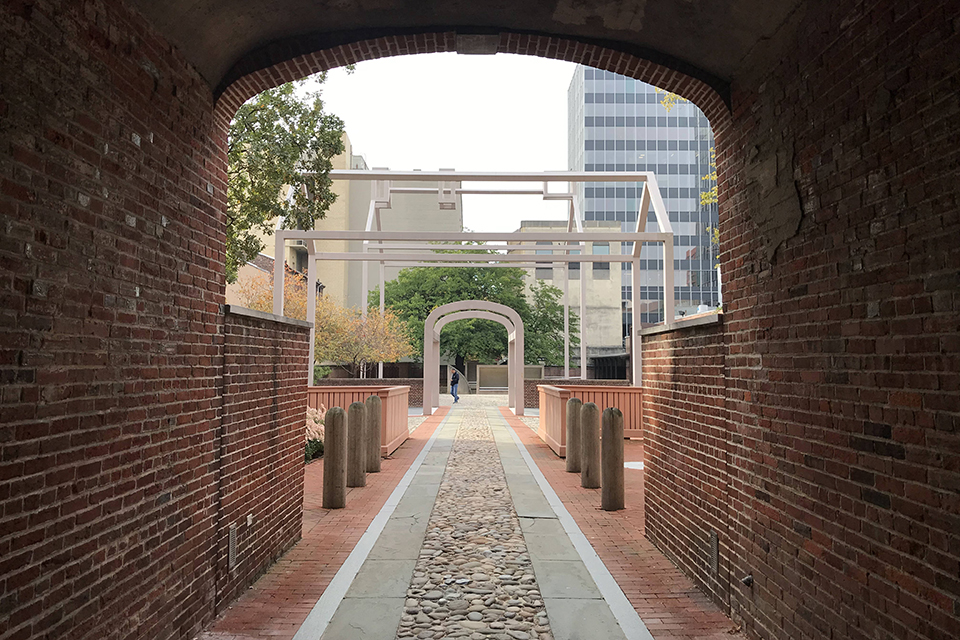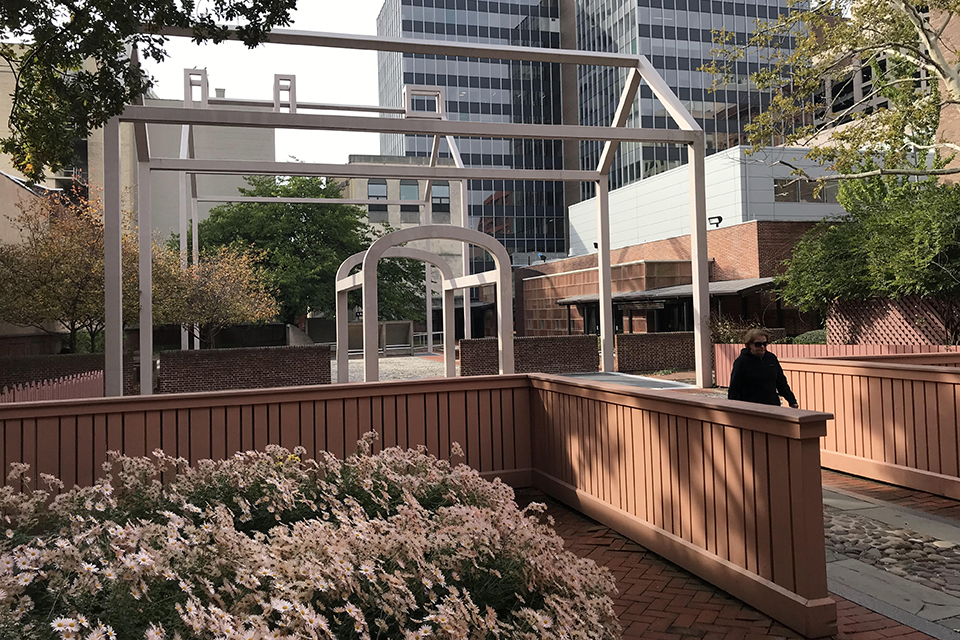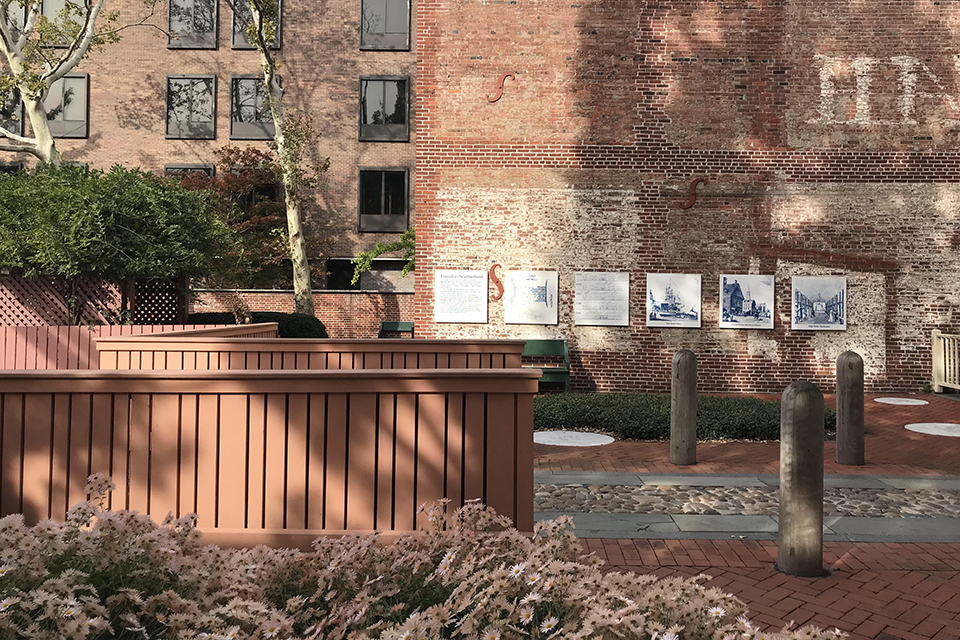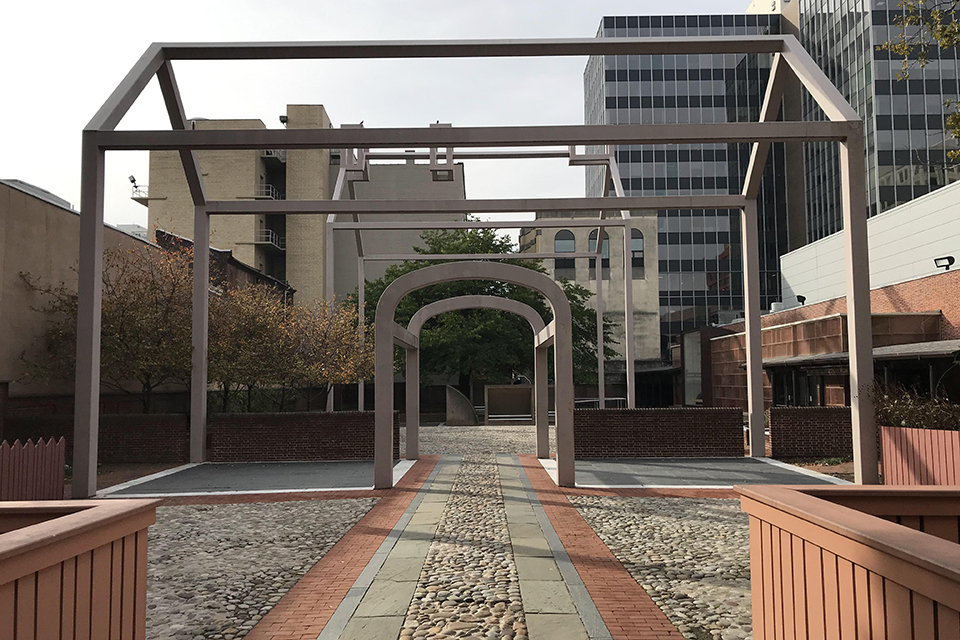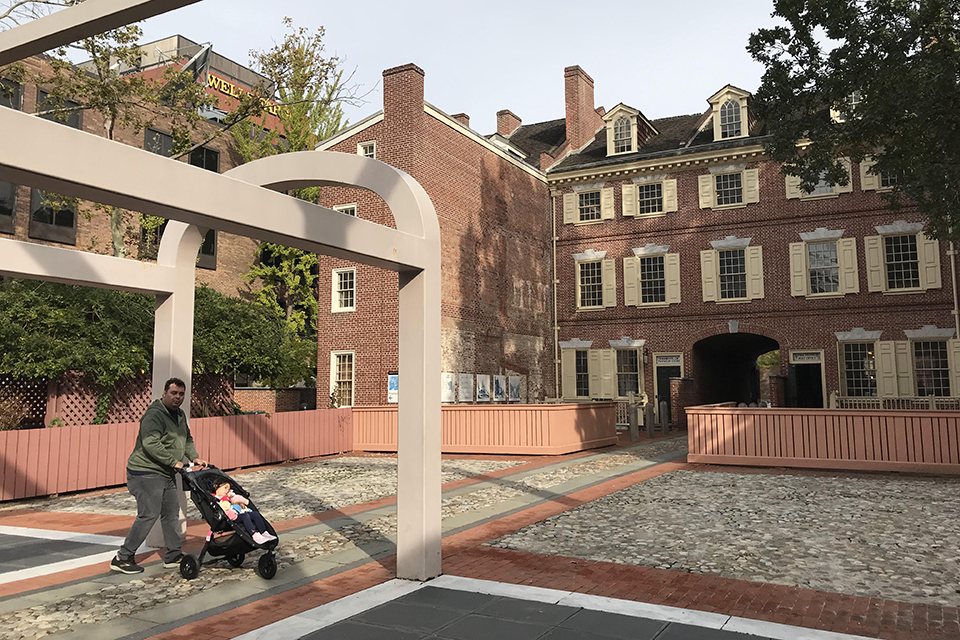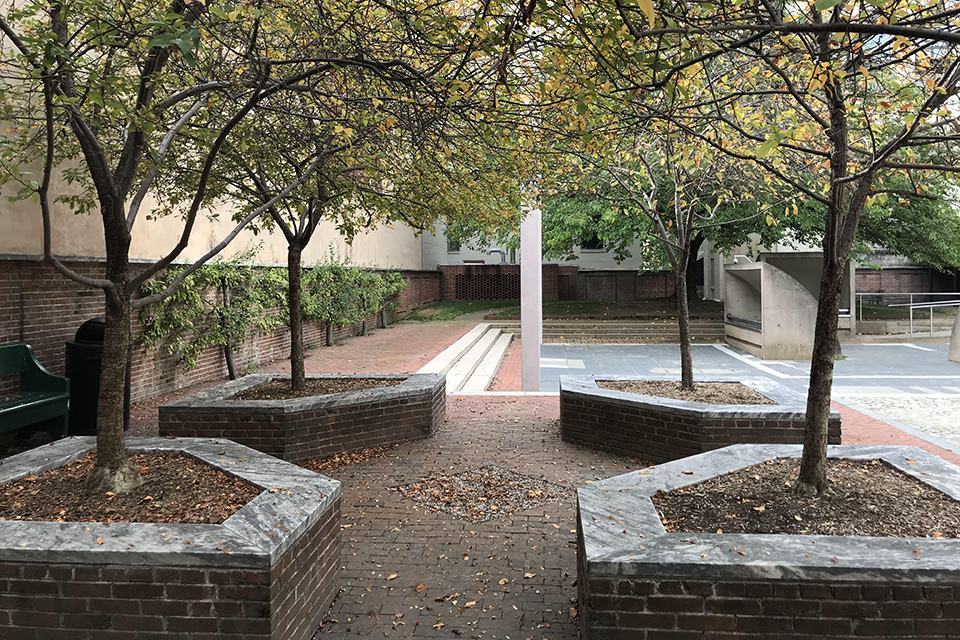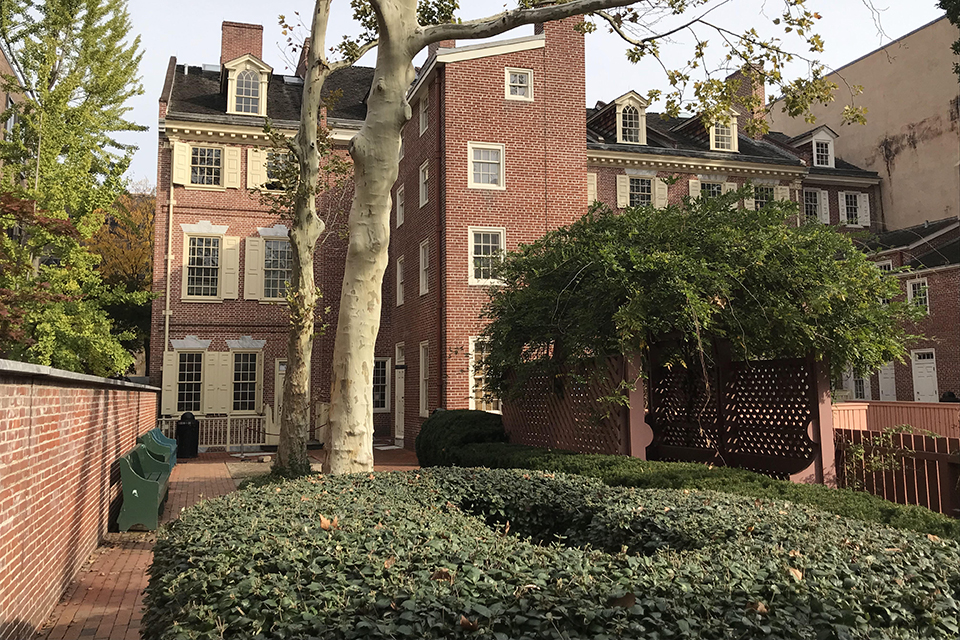Designed by the architectural firm Venturi and Rauch (now known as Venturi, Scott Brown and Associates), Franklin Court includes an outdoor museum and memorial to Benjamin Franklin sited in Philadelphia’s Independence National Historical Park.
Background
The complex was constructed on the site of Franklin’s home and includes a 30,000-square-foot underground museum, topped by two "ghost houses" approximating full-scale representations of Franklin’s house and adjacent print shop, which had been demolished in 1812. The original Venturi and Rauch project, commissioned by the National Park Service and completed in 1976 in anticipation of nationwide Bicentennial celebrations, also involved the reconstruction of five adjacent period houses that once faced Market Street, undertaken by John Milner and Associates.
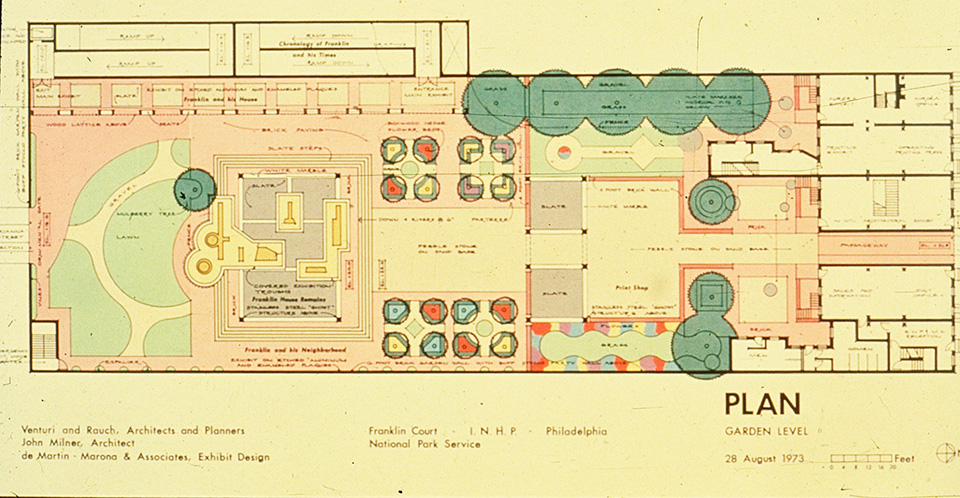 Plan for Franklin Court, Philadelphia, PA, 1973. Image courtesy The Cultural Landscape Foundation.
Plan for Franklin Court, Philadelphia, PA, 1973. Image courtesy The Cultural Landscape Foundation.
The entry to the memorial is through a passageway beneath the “ghost” structures, offering a sense of discovery and heightened drama, both physically and temporally. The inner court’s landscape design recalls an eighteenth-century garden, with as much attention given to the design for the museum entrance from the court. As Denise Scott Brown, one of the site’s designers, states, “The ramp felt like a Colonial road, possibly descending to the Delaware.” Viewing ports in situ allow visitors to see the few archaeological remains of the house unearthed during earlier research. Quotes from Franklin's letters to his wife during the house's construction are incised in the paving.
The design of this public space built upon the Greenway plan for Society Hill developed by Philadelphia planner and educator Edmund Bacon a decade earlier. Working with the Philadelphia Planning Commission, Bacon leveraged urban renewal funds to demolish dilapidated wharf buildings and warehouses and rehabilitate the cornerstone of Philadelphia’s Society Hill: its Colonial roots. The design for Franklin Court takes advantage of Bacon’s work to revive the neighborhood by seamlessly integrating with his system of pedestrian greenways a route that extends across the site between Market and Chestnut Streets and engages the entrance to the museum. This seamless integration encourages freedom and movement for all and provides a literal reflection of the democratic ideals presented at Independence Mall. As Maurice Harteveld writes, “new public spaces would symbolize civic society as, one, dominantly present since The Enlightenment and, two, underlying the existence of the United States of America.”
Since its completion, the project has been recognized with several awards from the American Institute of Architects, including the 1977 National Honor Award, and, in 1984, the Presidential Design and Federal Design Achievement Awards. Today, Franklin Court is one of the most visited attractions in Independence Park; as in Franklin's day, the space serves as a quiet oasis in the midst of a bustling commercial area. In a larger context, Franklin Court and Welcome Park in Philadelphia (also designed by Venturi Scott Brown in 1982) are unique interpretive designs that inspired a generation of historic preservation and design professionals. The pair of pioneering Postmodernist designs not only reclaimed urban spaces while avoiding pastiche and nostalgia, they also transformed them into public plazas that served residents and tourists alike.
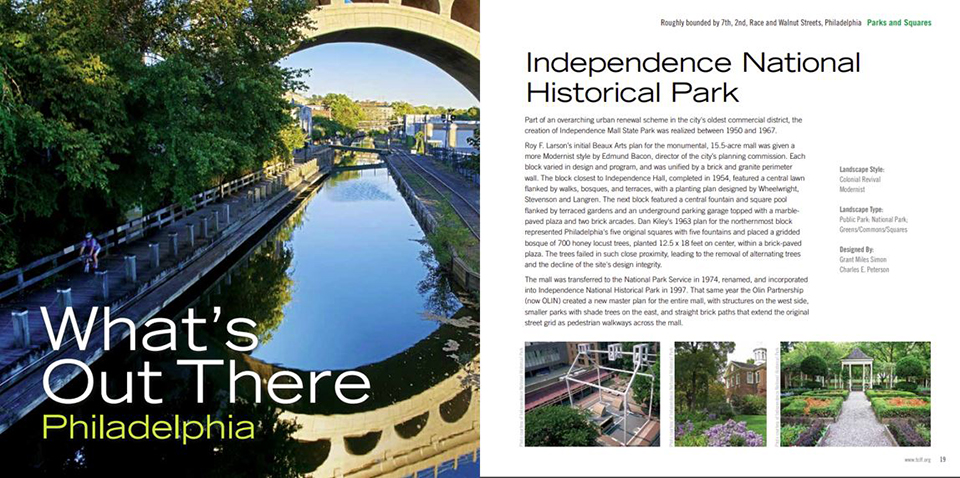
What’s Out There Philadelphia guidebook, 2013. Image courtesy The Cultural Landscape Foundation.
Advocacy and Engagement
On March 12, 2010, TCLF enrolled Franklin Court in its Landslide program following the issuance by the National Park Service rehabilitation plan for the underground museum at Franklin Court. While the proposed plan did not address the courtyard, it would have altered the relationship between the carefully choreographed, processional museum arrival experience and the “ghost” structures, thereby blurring and diminishing their significance. This plan also called for the replacement of the informal benches along the outer wall with an enclosure that would have encroached into the open space. TCLF encouraged the public to get involved by submitting comments in support of a more sympathetic design to the National Park Service, as well as to members of the Senate Committee on Energy and National Resources and to the House Subcommittee on National Parks, Forests, and Public Lands.
Following the Landslide designation and extensive public input, along with a strong rebuke from Denise Scott Brown, the rehabilitation plans were modified to be more sympathetic to the site. The plan, implemented in 2013, also resulted in improved accessibility to the courtyard’s “ghost structures.”
In 2013 and 2016 TCLF organized What’s Out There Weekends in Philadelphia, featuring dozens of free expert-led tours, including to Independence National Historical Park and Franklin Court. The 2013 program also dovetailed with the Civic Horticulture conference that TCLF co-hosted with the Pennsylvania Horticultural Society (PHS). The conference featured talks by over a dozen speakers from around the country and Belgium, all of which addressed three themes: the street, the productive garden, and parks and plazas. In 2016 TCLF’s program of tours was accompanied by a richly illustrated printed guidebook. Published in the same year – the 100th anniversary of the founding of the National Park Service – the digital What’s Out There Cultural Landscapes Guide to Philadelphia was the first of six guides that TCLF created with the National Park Service.
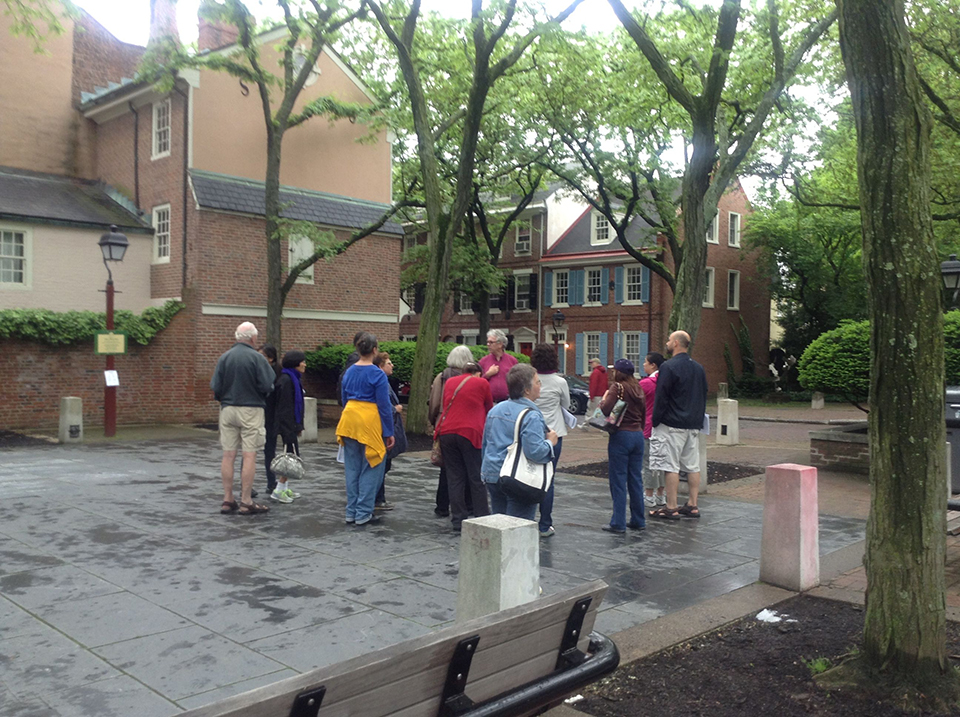 What’s Out There Weekend Philadelphia featured a tour of Franklin Court and the Society Hill neighborhood, Philadelphia, PA, 2013. Photo by Shaun Eyring, courtesy The Cultural Landscape Foundation.
What’s Out There Weekend Philadelphia featured a tour of Franklin Court and the Society Hill neighborhood, Philadelphia, PA, 2013. Photo by Shaun Eyring, courtesy The Cultural Landscape Foundation.
Since the 2013 rehabilitation, the National Park Service has done an excellent job maintaining the site. TCLF remains committed to keeping Philadelphia’s significant cultural landscapes, including Franklin Court, in the public’s eye, promoting responsible stewardship of these national treasures.
Selected Resources
“City Shaping III: The Philadelphia Story,” September 13, 2011
“May Philadelphia Events Focus on Civic Horticulture,” 2013
“TCLF and NPS Launch What's Out There Cultural Landscapes Guide to Philadelphia”
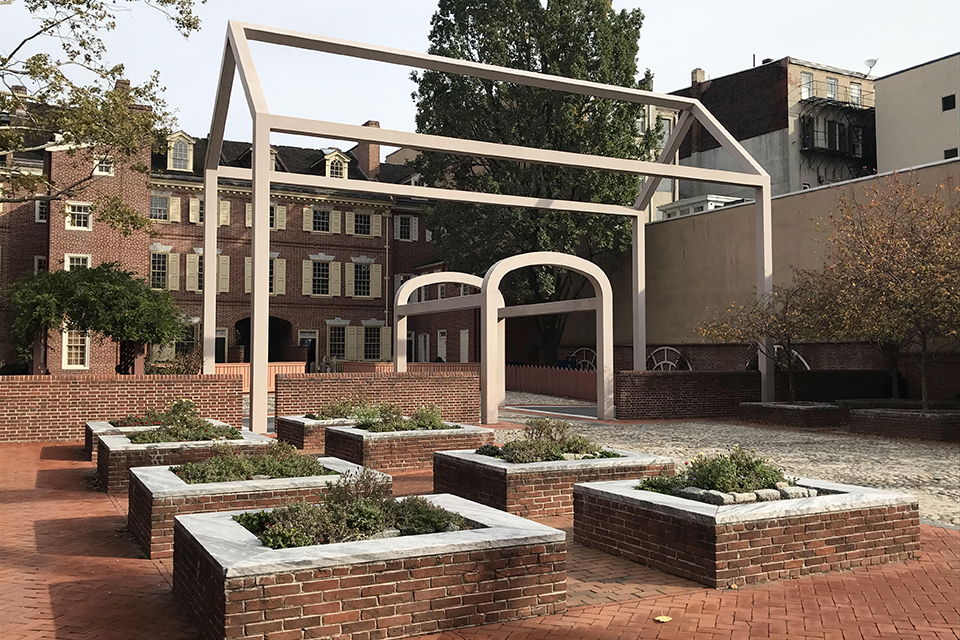
-
Franklin Court, Philadelphia, PA, 2019. Photo by Charles A. Birnbaum, courtesy The Cultural Landscape Foundation.
